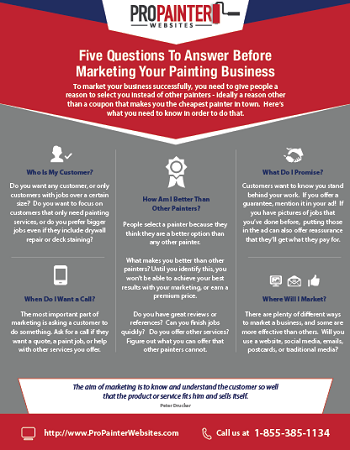Seasonal Factors To Consider For Business Exterior Paint: What You Need To Know
Seasonal Factors To Consider For Business Exterior Paint: What You Need To Know
Blog Article
Personnel Author-Korsholm Rodriquez
When you're preparing a business external painting job, seasonal aspects can make or damage your outcomes. You'll wish to think about how temperature level and humidity influence paint application and drying times. Picking the appropriate period can guarantee your paint adheres correctly and lasts longer. However which periods are really the best for this kind of work? Allow's discover the key elements that can influence your project's success.
The Impact of Temperature on Paint Application
When you're planning an industrial external paint task, the temperature can significantly affect how well the paint sticks and dries.
Preferably, supplemental resources wish to paint when temperature levels vary between 50 ° F and 85 ° F. If removing dry paint from carpet 's too chilly, the paint may not cure effectively, bring about issues like peeling or cracking.
On the other hand, if it's too warm, the paint can dry out also swiftly, preventing correct adhesion and resulting in an irregular surface.
You ought to likewise take into consideration the moment of day; early morning or late afternoon offers cooler temperature levels, which can be a lot more desirable.
Always check the maker's suggestions for the details paint you're making use of, as they often provide assistance on the perfect temperature range for ideal outcomes.
Moisture and Its Effect on Drying Times
Temperature level isn't the only environmental factor that influences your industrial outside paint job; moisture plays a substantial duty as well. High humidity degrees can slow down drying times drastically, influencing the overall high quality of your paint work.
When the air is filled with dampness, the paint takes longer to heal, which can bring about concerns like inadequate attachment and a greater risk of mold growth. If you're repainting on a specifically moist day, be planned for extensive wait times between coats.
It's vital to check regional weather and plan appropriately. Ideally, Read More On this page for humidity degrees in between 40% and 70% for ideal drying out.
Keeping these consider mind guarantees your task stays on track and delivers an enduring surface.
Best Seasons for Commercial Outside Painting Projects
What's the best time of year for your business external paint projects?
Spring and early autumn are usually your best choices. During these periods, temperature levels are mild, and moisture levels are often lower, developing optimal conditions for paint application and drying.
Avoid summer season's intense heat, which can create paint to dry too promptly, causing bad adhesion and coating. Similarly, wintertime's chilly temperatures can impede correct drying out and treating, risking the longevity of your paint work.
Go for days with temperature levels between 50 ° F and 85 ° F for optimum outcomes. Bear in mind to examine the regional weather report for rainfall, as damp problems can spoil your project.
Planning around these elements ensures your painting job runs efficiently and lasts much longer.
Final thought
In conclusion, planning your industrial external painting jobs around seasonal considerations can make a considerable difference in the outcome. By scheduling work during the optimal temperature levels and humidity degrees, you'll make certain better adhesion and drying out times. Remember to watch on regional weather report and pick the correct time of year-- spring and very early autumn are your best options. Taking these actions will certainly help you attain a sturdy and specialist coating that lasts.
